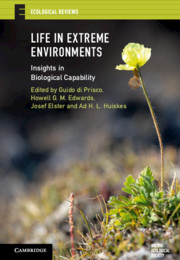Book contents
- Life in Extreme Environments
- Ecological Reviews
- Life in Extreme Environments
- Copyright page
- Dedication
- Contents
- Contributors
- Introduction
- Part I Extreme environments: responses and adaptation to change
- Part II Biodiversity, bioenergetic processes, and biotic and abiotic interactions
- Part III Life in extreme environments and the responses to change: the example of polar environments
- Part IV Life and habitability
- Index
- Plate Section (PDF Only)
- References
Part I - Extreme environments: responses and adaptation to change
Published online by Cambridge University Press: 28 September 2020
- Life in Extreme Environments
- Ecological Reviews
- Life in Extreme Environments
- Copyright page
- Dedication
- Contents
- Contributors
- Introduction
- Part I Extreme environments: responses and adaptation to change
- Part II Biodiversity, bioenergetic processes, and biotic and abiotic interactions
- Part III Life in extreme environments and the responses to change: the example of polar environments
- Part IV Life and habitability
- Index
- Plate Section (PDF Only)
- References
- Type
- Chapter
- Information
- Life in Extreme EnvironmentsInsights in Biological Capability, pp. 7 - 86Publisher: Cambridge University PressPrint publication year: 2020

